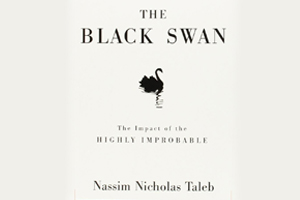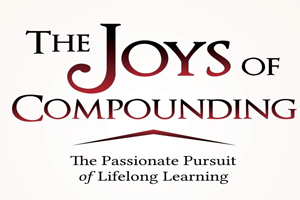Author: Ron Chernow
History teaches you a multitude of lessons, and empowers you to learn from past mistakes, in an attempt to forego failure in your own endeavours. The House of Morgan: An American Banking Dynasty and the Rise of Modern Finance is a comprehensive history of the Morgan family and their eponymous financial institution, written by Ron Chernow. A renowned American biographer famous for having written several acclaimed books on famous figures in American history such as Alexander Hamilton, George Washington, and John D. Rockefeller, Ron Chernow’s treatises are a guidebook for the financially savvy individual keen on imbibing lessons from the past. The book chronicles the rise of the Morgans, as one of the most powerful families in American finance and the development of modern finance.
Ron Chernow is an American author, biographer, and historian. He was born in 1949 and graduated from Yale University in 1970. He has written several books, including "Alexander Hamilton," which was the basis for the hit Broadway musical "Hamilton." Chernow has won numerous awards for his writing, including the Pulitzer Prize for Biography in addition to the prestigious National Book Award for Nonfiction.
Key Takeaways
- When you plan a business, foster one capable of functioning without the support of investors. Focus on the objective of maintaining complete ownership.
- After making money for yourself, consider investing your funds in other solid businesses which require investors.
- In the words of JP Morgan, every person has more than one reason for the things they do, and these can be divided into the good reason and the real reason.
- Avoid talking unnecessarily and focus on reducing your speech by two-third.
- The Morgans were significantly influenced by the Rothchilds and desired to build a similar family dynasty.
- Advertisements and marketing measures may not be required for exclusive clubs like the JP Morgan bank, which acted as a high-class society for the world’s wealthiest people.
- For a sustainable business, it is best to settle issues without entering into lawsuits or allowing the public into your boardrooms.
- When you are the CEO of a company, you should have sound knowledge of the business financials. Focus on auditing your books personally, at least on an annual basis and assess daily financial reports if you choose to delegate.
The treatise delineates the journey of the legendary Morgan family, which played a significant role in shaping American finance in the 19th and 20th centuries, charting their rise from humble beginnings to becoming one of the most powerful financial families in the world. The family was instrumental in the development of modern finance, including the creation of the Federal Reserve and the establishment of the U.S. financial system. The book details how the family worked closely with the government to help stabilise the U.S. economy and financial markets, offering innumerable lessons for people keen on building or sustaining their own dynastic businesses.
The rise of the Morgans
"The House of Morgan" chronicles the rise of the Morgan family from their humble beginnings to becoming one of the most powerful financial families in the world, while detailing the family's origins in England, their migration to the United States, and their early involvement in the financial industry. It also explores the family's various business ventures, including their involvement in railroads, steel, and other industries. This chronicle of the Morgans can be considered one of the most ambitious and extensive histories ever penned about a banking dynasty on American soil. Its epic proportions trace the rise of the J. P. Morgan Empire, ranging from its inception in Victorian London, and ending in the 1987 crash which shocked the globe. The tale spans four generations of the illustrious family, while also shedding light on their various firms such as the J. P. Morgan & Co. (Morgan Guaranty), Morgan Stanley, and Morgan Grenfell.
The development of modern finance
The Morgans played a crucial role in the development of modern finance from their contributions to the creation of the Federal Reserve and the establishment of the U.S. financial system to the family’s involvement in the consolidation of the banking industry and the rise of investment banking. In addition to the historical context for understanding the modern financial system and the role of Wall Street in the economy, the underbelly of the American wealthy cadre is laid bare with a focus on the social milieu surrounding the patriarch, who was renowned for his magnificent art collection, variety of mistresses, and enormous yacht. Modern finance developed as a part of the countless interactions between this exclusive club of the wealthy, with partners Tom Lamont, Dwight Morrow, and Russell Leffingwell being regularly in touch with US presidents, thus embodying absolute power and glamour.
Analysing Wall Street
The workings of Wall Street and the financial industry, during the late 19th and early 20th centuries, are enriching lessons in themselves. From exploring the evolution of banking practices, the role of investment banking, and the rise of the stock market, to the intricacies of bond trading and the impact of the Panic of 1907 on the financial industry, the Morgan family played a role in almost every major financial occurrence during their period of power. The Panic was a financial crisis that began with a run on banks and ended with the stock market crashing. In this cataclysmic scenario, J.P. Morgan & Co. played key roles in preventing a complete collapse of the financial system by organising a consortium of bankers to provide emergency funding to banks in danger of failing.
Their reign also witnessed the impact of World War I and the Great Depression on the U.S. economy, while also bearing testimony to the role of globalisation in shaping the modern financial system. For instance, the evolution of banking practices and the role of investment banking in particular can be traced back to the Morgans including the creation and underwriting of securities, such as stocks and bonds. They were also instrumental to financing new businesses and industries, as well as providing advice to corporations and governments. The Morgans were known for their expertise in bond trading, and they helped to establish the market for U.S. government bonds. They were also involved in the creation of the New York Stock Exchange and helped to establish the rules and regulations governing the exchange.
Controversies surrounding the Morgans
Despite their focus on keeping their personal business behind closed doors, the Morgans were not without controversy, and some of their more questionable actions included being involved in the creation of monopolies and the use of insider trading. Further, the Morgans' close ties to the U.S. government played a key role in allowing them to frequently use their influence to further their own interests. Their personal lives also witnessed scrutiny and strife, due to potentially strained relationships as well as a plethora of extra-marital affairs. As with every extraordinary business dynasty, the Morgans were also known for their majestic lifestyles and lavish expenditure on everything luxurious – from houses and art to yachts and vacations.
For every enthusiast of financial history, the voluminous book provides a comprehensive study of the Morgan family and their impact on American finance. It not only highlights the family's contributions to the development of modern finance, but also sheds light on their controversial actions and close ties to the U.S. government. It is a fascinating look at one of the most influential families in U.S. history and the development of modern finance and highlights lessons such as the need for shifting gears when faced with evolving times and situations. Set in an era dictated by violent interest rate movements, shelf registrations, and negotiations on commissions it also chronicles the tale of a period wherein financial institutions were willing to depend on an individual’s personal character and credit, before spanning to a time marked by casino capitalism incapable of understanding the importance of tradition.
Something that really stands out when you read about the Morgans is the enduring growth that they have witnessed through generations, having navigated changing market scenarios, varying economics landscapes, changing governments, etc. Their ascent and endurance are true testimony of the adage that wealth is created only if you invest for the long-term. However, as you know, it is extremely challenging to stay true to your investment plan in changing market scenarios and evolving personal circumstances. This is where a systematic investment plan (SIP) can really help. SIP is an investment vehicle that allows you to invest a fixed amount of money, at a time interval chosen by you, in mutual fund schemes that suit you best. You can start an SIP with as low as INR 500 while there is no ceiling to the amount of money that you can invest via an SIP. Since you commit a fixed amount, you are more inclined to continue investing through market ups and downs. As a matter of fact, the ups and downs of the market can serve you well since during down markets you end up buying more units and in up markets you buy lesser units. As a result, over a period of time, your average cost of acquisition reduces while you continue to enjoy the power of compounding. Wealth is not created in a day. It takes time, commitment, discipline, and patience – all things that are offered by SIPs.
An investor education initiative by Edelweiss Mutual Fund.
All Mutual Fund Investors have to go through a onetime KYC process. Investor should deal only with Registered Mutual Fund (RMF). For more info on KYC, RMF and procedure to lodge/redress any complaints – please visit on https://www.edelweissmf.com/kyc-norms
Trending Books
MUTUAL FUND INVESTMENTS ARE SUBJECT TO MARKET RISKS, READ ALL SCHEME RELATED DOCUMENTS CAREFULLY.

















